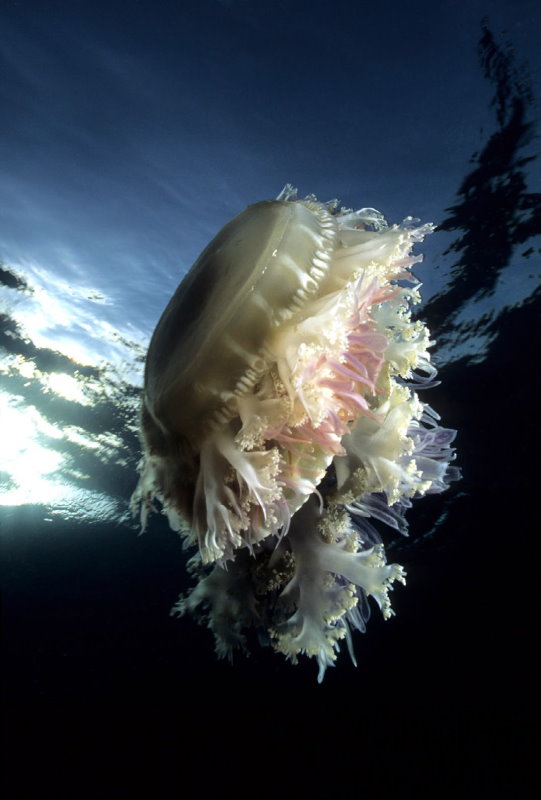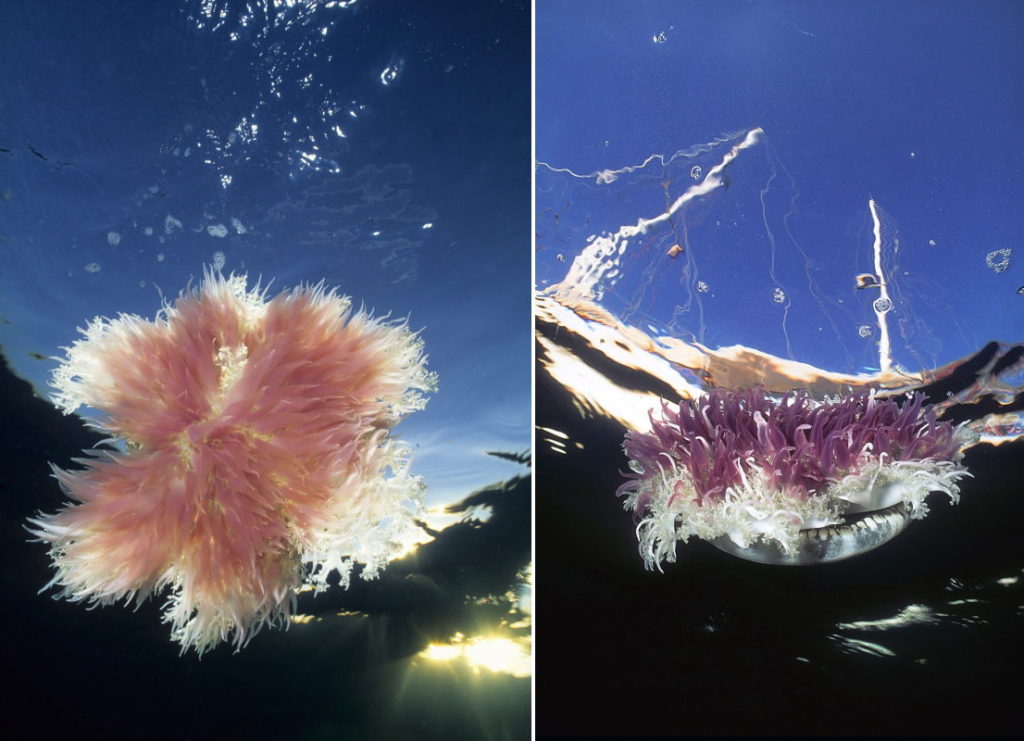
Biological introduction
This is one of the eight species of jellyfish that are part of the Cassiopeidae family, a family that is represented ONLY by these eight species, which can be easily recognized by having a flat, circular umbrella, with dimensions that reach even 30 cm in diameter and that populate almost all the warm and temperate seas of our planet.
We almost forgot the most salient feature: you will undoubtedly recognize a Cassiopea because it lives “upside down”!
The flat umbrella remains in contact with the bottom and the tentacles are facing upwards, and in this position it remains, even if it is removed from the bottom, where it returns by beating its umbrella with the classic
jellyfish movement, always reversed upside-down.
Depth
Tendentially tied to not particularly deep seabeds, both sandy and detrital, these jellyfish are found as far as the light can pass with good intensity that, in the crystal clear waters of the Red Sea, leads them to distribute even up to 20 meters deep.
Curiosity
Undoubtedly the most obvious curiosity is linked to its most striking feature, which then gives these jellyfish the common name of “upside-down jellyfish”.
This feature hides an even more peculiar curiosity: like all jellyfish, these are also equipped with stinging cells used to catch food, but in the case of Cassiopea the number of stinging cells is extremely low, and they have expanded tentacles (almost like form small spearheads) where the jellyfish have learned to “cultivate” zooxanthellae, microalgae of the same class as those that are inside the polyps of the hard corals.
This reveals why the Cassiopea live on shallow depths, and reveals why they live turned upside down.
The tentacles containing the zooxanthellae must be exposed to light, so that these microalgae can do photosynthesis.
As a benefit for this symbiosis, jellyfish receive much of their nourishment in the form of simple sugars produced precisely by zooxanthellae due to photosynthesis.

Approach and observation
Of course, watching those still creatures stuck to the bottom may even not be the biggest thrill of the dive, but this does not allow us to mistreat these delicate organisms. First of all, a close-up view will allow us to observe the elegance of the shape and the tentacles colored from the inside by zooxanthellae…and if you really can’t resist the thrill of seeing it twirl in the water the least you can do is taking these two precautions:
- If you are in a group, do it once while everyone attends;
- Don’t touch it directly with your warm, rough and dirty big hands, but rather put a finger under the sand and let the sand itself acts as protection for the delicate jellyfish.
Let us remember that they are made for more than 90% by water and our eagerness could cause their death.
Thus, once again let us remember to be careful observers and lovers of the sea, and not a source of disturbance and harm.

WORDS and PICTURES by Massimo Bicciato and Emilio Mancuso

















